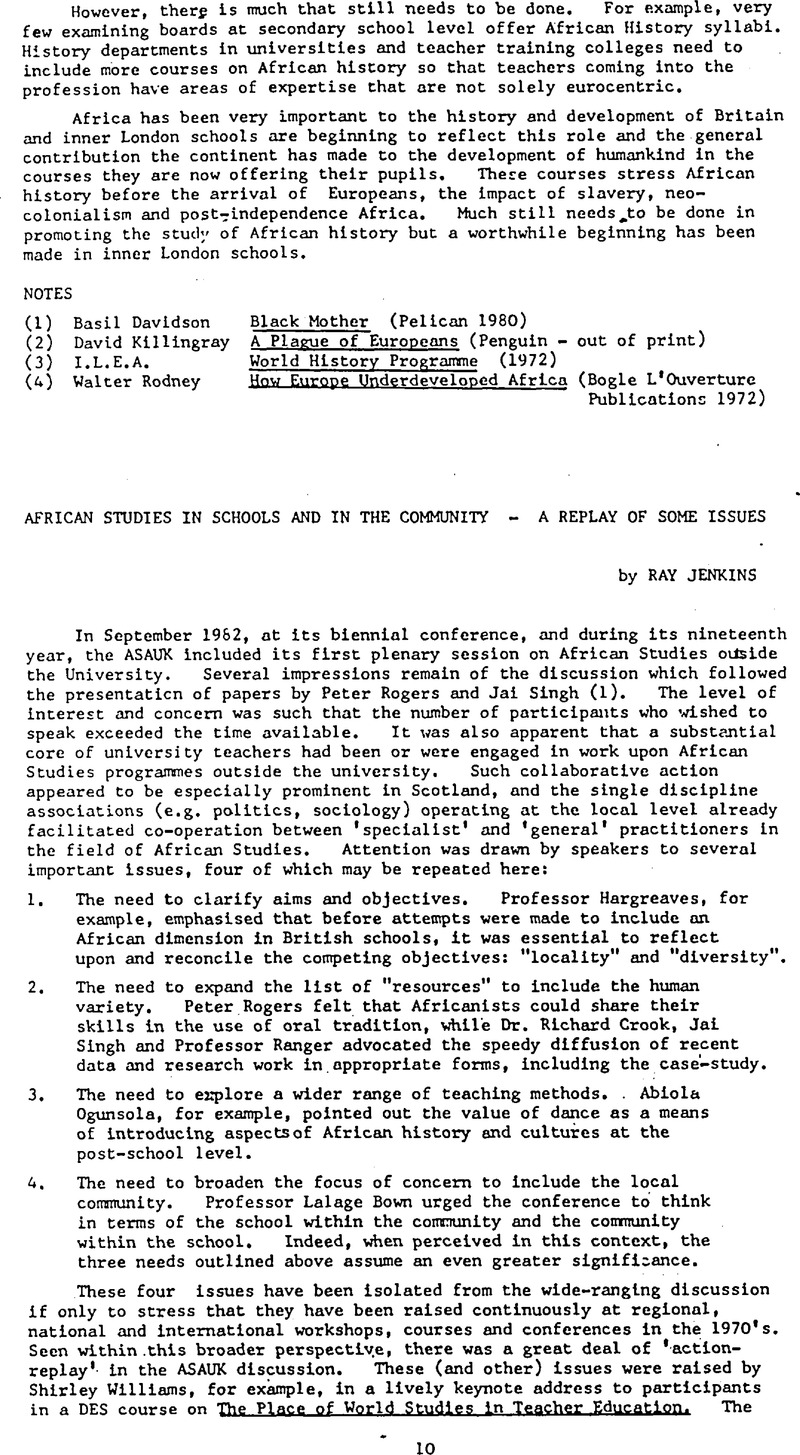No CrossRef data available.
Published online by Cambridge University Press: 25 April 2022

1. Both of which have been reprinted in this issue of ARD.
2. The author, Robin Richardson, has acknowledged its simplicity - when taken out of context of the article, as is the case here!
3. P. Rogers’ paper, p. 3.
4. For example, Lydia White, Impact, World development in British education, V.C.O.A.D., 1971; J. & D. Wright, The Changing World in the Classroom. V.C.O.A.D., 1974 (which contains a substantial bibliography of this type of material); Preiswerk, R., The Slant of the Pen, Racism in Children's Books. W.C.C., Geneva, 1981Google Scholar; Wright, Dr., ‘Africa in the School Geography Curriculum, 1820-1970’. African Affairs, 80, 321, 1981CrossRefGoogle Scholar.
5. ‘Education thus becomes an act of depositing, in which the students are the depositories, and the teacher is the depositor. This is the ‘banking’ concept of education, in which the scope of action allowed to the student extends only as far as receiving, filing, and storing the deposits; They do, it is true, have the opportunity to become collectors or cataloguers of the things they store. But in the last analysis, it is men themselves who are filed away through the lack of creativity’. Freire, Paulo, The Pedagogy of the Oppressed. Penguin, 1972, pp.45–46Google Scholar.
6. Hence the comment (not without a touch of irony) that a ‘Third World’ Studies Kit in the hands of some teachers is as dangerous as an offensive weapon in the hands of England football supporters!
7. P. Rogers, op.cit., p. 5.
8. One wonders, for example, whether history teachers, operating the traditional school syllabus, ever feel ‘unqualified’ or ‘unprepared’ to teach Italian, German, Russian, Irish, Scottish or Welsh history. Indeed, in England, in the context of ‘British History’ one feels that the ‘Celtic fringe’ has less a profile than Africa!
9. Jahoda, G., ‘Children's Concepts of Time and History’, Educational Review. 15, 2, (1963)CrossRefGoogle Scholar; ‘The Development of Children's Ideas About Country and Nationality’, British Journal of Educational Psychology, 33, (1963)Google Scholar, Parts I and II; Hallam, R.N., ‘Piaget and Thinking in History’ in Ballard, M. (ed), New Movements in the Study and Teaching of History. Temple-Smith, 1970Google Scholar; Torney, J., ‘Middle Childhood and International Education’, Intercom, New York, 1971Google Scholar; Carnie, J., ‘Children's Attitudes to other Nationalities’, in Groves, N. (ed), New Movements in the Study and Teaching of Geography. Temple-Smith, 1972Google Scholar; C.E. Kline, Impact of curricular offerings in African studies upon students’ attitudes toward Africa: its peoples and cultures. U.S.O.E., 1972 (and paper presented at the World Conference in Curriculum and Instruction, University of Keele, September, 1974).
10. Roberts, A., ‘Safari Records of East Africa's Past’, African Archives File. No. 1, O.U.P. and Neczam, 1971Google Scholar.
11. In their papers in ARD.
12. Richardson, R., ‘Tensions in World and School’, Bulletin of Peace Proposals. (I.P.R.A., Oslo), Vol.5, (1974), p.265CrossRefGoogle Scholar.